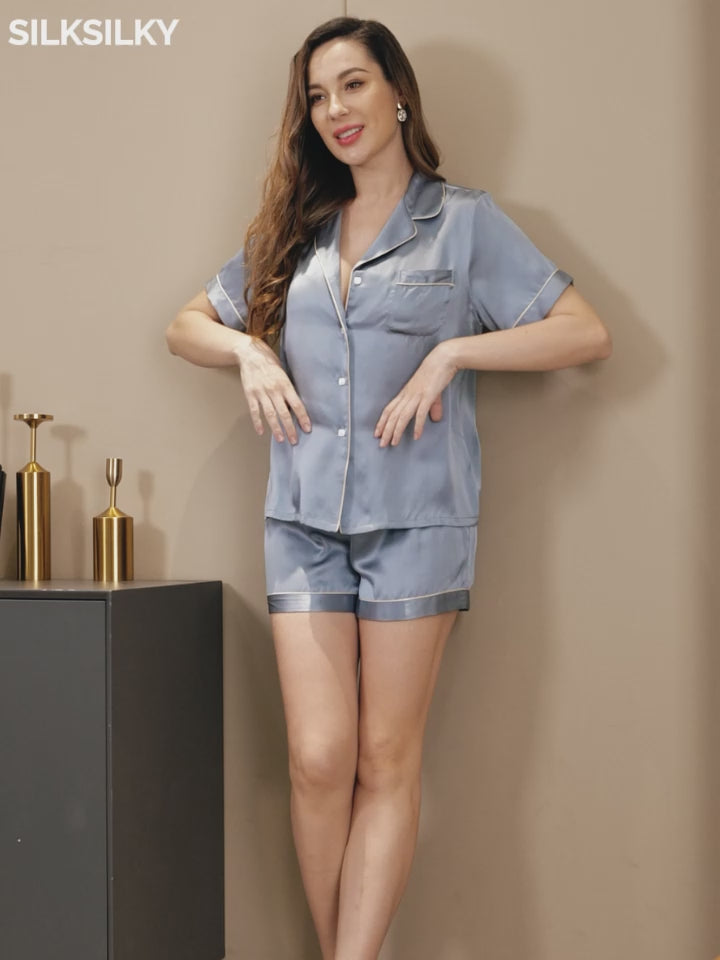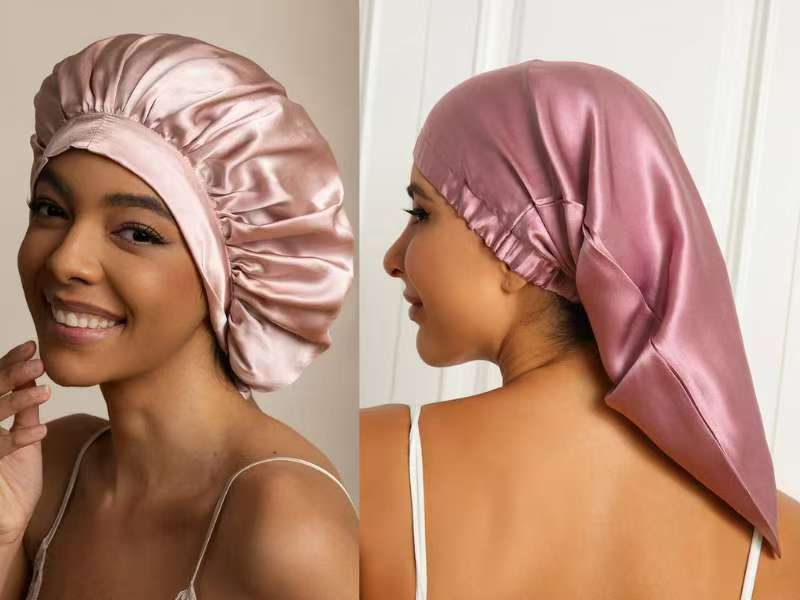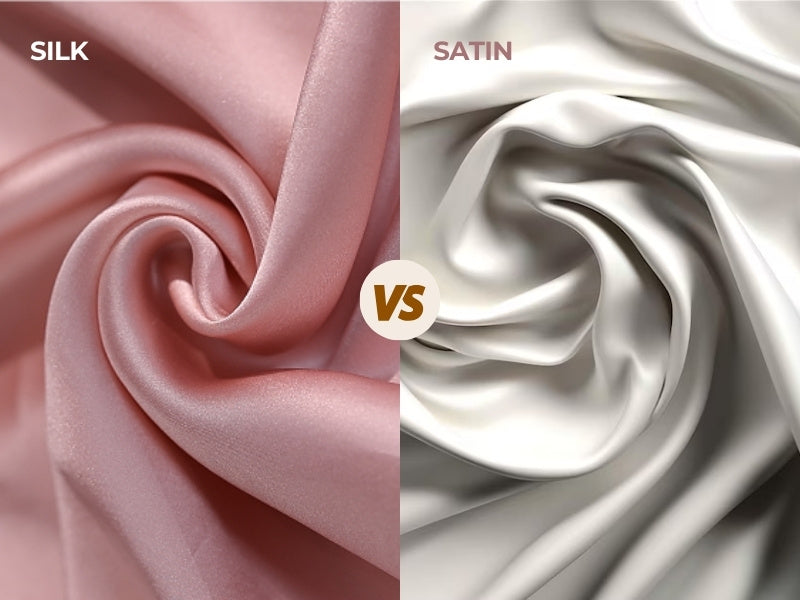How to Tackle Wrinkles of Silk Sheets
Table of Contents
Silk sheets have long been a symbol of luxury, coveted for their unparalleled softness, smooth texture, and the opulent sheen they bring to any bedroom. But beyond their aesthetic appeal, silk sheets offer a range of benefits for the skin and hair, making them a popular choice among those who value both beauty and comfort. However, as with all good things, silk sheets come with their challenges, particularly when it comes to maintenance. This blog will explore the myriad benefits of silk sheets, delve into the reasons behind their tendency to wrinkle, and offer practical solutions for keeping your silk sheets as smooth and beautiful as the day you bought them.
The Benefits of Silk Sheets
Silk sheets are more than just a symbol of luxury; they offer numerous practical health and comfort benefits. Here’s a more detailed look at why silk sheets have become a favorite for many:
1. Unmatched Softness and Comfort
Silk sheets are renowned for their incredibly soft texture. Unlike cotton or synthetic fabrics, silk’s smooth surface offers a unique sensation, seamlessly blending with your skin for a luxurious sleeping experience. This comfort not only promotes deeper sleep but also reduces skin irritation caused by friction, making sleep more peaceful and restful. For those with sensitive skin or allergies, silk sheets are an ideal choice, as they minimize potential skin irritation and offer an unparalleled sleep experience.
2. Skin-Friendly Properties
Silk is a natural protein fiber with hypoallergenic qualities, making it gentle on the skin. Its smooth surface can significantly reduce sleep lines and wrinkles that might otherwise become permanent over time. Unlike other fabrics, the slick feel of silk minimizes the pulling and tugging on the skin, reducing the likelihood of skin impressions. For those who prioritize skin care, opting for silk sheets is a simple way to avoid premature skin aging.
3. Moisture Retention and Anti-Aging
Silk’s natural fibers have excellent moisture retention capabilities, meaning it doesn’t absorb moisture from the skin as cotton does. Instead, silk helps maintain your skin’s natural hydration, preventing dryness during the night. For those concerned about premature aging, silk sheets offer an effective tool to prevent dryness and the formation of fine lines. This moisturizing effect benefits not only the skin but also the hair, helping to reduce dryness, breakage, and split ends.
4. Promotes Hair Health
Silk sheets are not only kind to your skin but also significantly benefit hair health. Traditional cotton sheets, with their higher friction, can cause hair damage during sleep, leading to breakage, split ends, and frizz. The smooth surface of silk sheets reduces friction, helping to protect the hair’s cuticle and prevent breakage or tangling during the night. For those with curly or textured hair, silk bed sheets can also help maintain natural curl patterns and reduce the flattening or loss of bounce due to friction.
5. Temperature Regulation and Seasonal Adaptability
Silk has excellent temperature-regulating properties, helping to maintain a comfortable sleep temperature regardless of the season. In summer, silk’s breathability prevents heat buildup, keeping you cool; while in winter, silk provides a warming effect, helping your body stay comfortably warm. Silk sheets are adaptable to various climates, ensuring an ideal sleep environment whether it’s a hot summer night or a cold winter evening. This temperature regulation is especially beneficial for those sensitive to temperature changes, ensuring high-quality sleep year-round.
6. Hypoallergenic and Protective Qualities
Silk’s natural hypoallergenic properties make it an ideal choice for those with allergies. Unlike other common bedding materials, silk is naturally resistant to dust mites and mold, reducing the buildup of these allergens on your sheets. This not only helps reduce allergic reactions but also provides a cleaner, more hygienic sleeping environment. Additionally, silk’s low moisture absorption means it doesn’t retain sweat or dampness like cotton, reducing the likelihood of mold and bacteria growth and keeping your sheets clean and fresh.
7. Longevity and Durability
Although the initial investment in silk sheets may be higher, they are a durable choice in the long run. Silk fibers are strong and resilient, making them less prone to tearing or wearing out. With proper care, silk sheets bed can last for many years without losing their luster and texture. While they require more delicate care, this durability makes silk sheets a worthwhile investment in high-quality home goods, providing not only a better sleep experience but also maintaining their beauty and comfort over time.
Why Do Silk Sheets Wrinkle?
Silk bed sheets are cherished for their luxurious feel and elegant appearance, but they are also known for being prone to wrinkles. Understanding why silk sheets wrinkle can help in managing and minimizing these creases, ensuring that your silk bedding remains smooth and aesthetically pleasing.
1. Natural Fiber Structure
Silk is a natural protein fiber, derived from the cocoons of silkworms. Unlike synthetic fabrics, which are often more rigid and resistant to creasing, silk’s natural fibers are delicate and highly flexible. This inherent flexibility is one of the reasons silk feels so smooth and soft against the skin, but it also means that the fabric is more susceptible to wrinkling. The fine, lightweight nature of silk allows it to move and shift easily, which can lead to wrinkles forming, especially after washing or prolonged use.
2. Sensitivity to Moisture
Silk is highly sensitive to moisture, which plays a significant role in the wrinkling process. When silk absorbs moisture, whether from washing, humidity, or body sweat during sleep, the fibers can swell and lose their shape. As the silk dries, these fibers contract, leading to the formation of wrinkles. This moisture sensitivity means that even small amounts of water or humidity can cause silk sheets to wrinkle, making it important to manage how and where silk sheets are used and stored.
3. Lack of Elasticity
Silk, despite its many desirable qualities, lacks the elasticity found in some other fabrics, such as cotton blends or polyester. Elasticity helps fabrics return to their original shape after being stretched or compressed, but silk does not have this ability to the same extent. As a result, when silk sheets are folded, bunched, or slept on, they can develop creases that do not naturally spring back, leading to a wrinkled appearance. This lack of elasticity means that even careful handling might not prevent wrinkles from forming.
4. Thread Count and Weave
The thread count and weave of silk sheets can also influence their propensity to wrinkle. Higher thread count silk sheets, while generally softer and more luxurious, can be more prone to wrinkling because the denser weave allows less flexibility in the fabric. Similarly, the type of weave, such as charmeuse or habotai, can impact how easily the fabric wrinkles. Charmeuse, for instance, has a smooth, glossy finish but can wrinkle more easily due to its finer, more delicate weave.
5. Environmental Factors
The environment in which silk sheets are used and stored can significantly affect their tendency to wrinkle. High humidity levels, for example, can cause silk to absorb more moisture from the air, increasing the likelihood of wrinkles. Similarly, silk sheets stored in cramped or folded conditions may develop creases that are difficult to remove. Even the temperature of the room can play a role, as heat can cause the silk fibers to expand and contract, further contributing to wrinkling.
6. Washing and Drying Practices
The way silk sheets are washed and dried is another crucial factor in why they wrinkle. Silk is a delicate fabric that requires gentle care during laundering. Harsh washing methods, such as high temperatures or vigorous machine cycles, can cause the fibers to become agitated and crumpled, leading to wrinkles. Likewise, improper drying techniques, like using a high-heat dryer or hanging silk sheets in direct sunlight, can cause uneven drying and result in wrinkles. To maintain the smoothness of silk sheets, it is important to follow specific washing and drying instructions tailored to silk fabrics.
7. Interaction with Other Fabrics
Silk sheets are often used in conjunction with other types of bedding, such as cotton or wool blankets. These heavier, rougher fabrics can press against the silk, leading to creases and wrinkles, especially when the bed is slept in or if the sheets are tucked tightly. The interaction between silk and these materials can create friction and pressure points that cause the silk to wrinkle more easily.
How to Deal with Wrinkles in Silk Sheets
Silk sheets are prized for their luxurious texture and elegant appearance, but their delicate nature also makes them prone to wrinkles. Dealing with these wrinkles effectively requires special care to preserve the beauty and quality of the silk. Below are several methods to help you keep your silk sheets smooth and wrinkle-free.
1. Proper Washing Techniques
The way you wash your silk sheets plays a significant role in preventing and minimizing wrinkles. Silk is a delicate fabric that requires gentle handling during the washing process. Here are some key tips for washing silk sheets:
Use Cold Water: Always wash silk sheets in cold water to prevent the fibers from becoming damaged or losing their elasticity. Hot water can cause the silk to shrink or become misshapen, leading to wrinkles.
Choose a Gentle Detergent: Use a detergent specifically formulated for delicate fabrics like silk. Harsh detergents can strip the silk of its natural proteins, causing it to weaken and wrinkle more easily. Avoid using bleach or fabric softeners, as these can also damage the fabric.
Hand Wash or Use a Gentle Machine Cycle: Hand washing is the best way to care for silk sheets, but if you prefer to use a washing machine, select the gentle or delicate cycle. Place the sheets in a mesh laundry bag to further protect them from the machine’s agitation, which can cause wrinkles.
2. Proper Drying Techniques
How you dry your silk sheets is just as important as how you wash them. Improper drying can lead to deep wrinkles that are difficult to remove. Follow these steps to dry your silk sheets properly:
Air Drying: The best way to dry silk sheets is by laying them flat on a clean, dry towel in a shaded area. Avoid direct sunlight, as UV rays can cause the silk to fade and weaken. Lay the sheets out evenly to prevent them from bunching up, which can create wrinkles. If you need to hang them, do so carefully, and avoid using clothespins that might leave marks.
Avoid the Dryer: Never use a dryer to dry silk sheets. The heat and tumbling action can cause severe wrinkling and even damage the delicate fibers. Air drying is always the safest option.
Iron While Damp: If your silk sheets do develop wrinkles after washing, you can iron them while they are still slightly damp. Use a low heat setting specifically for silk and place a pressing cloth between the iron and the fabric to protect the delicate fibers. Ironing while damp helps to smooth out wrinkles more effectively without causing damage.
3. Steaming
Steaming is one of the most effective methods to remove wrinkles from silk sheets without causing damage. A garment steamer provides gentle, even heat that relaxes the silk fibers, allowing wrinkles to fall out naturally. Here’s how to use a steamer on your silk sheets:
Hang the Sheets: For the best results, hang the silk sheets on a padded hanger or lay them flat on a smooth surface. Ensure the sheets are not bunched up, as this can make it harder to remove wrinkles evenly.
Steam Gently: Hold the steamer a few inches away from the fabric and move it slowly across the sheets. Allow the steam to penetrate the fabric, which will help to relax the fibers and remove wrinkles. Avoid over-steaming or focusing on one area for too long, as excessive moisture can cause water spots or damage.
Smooth by Hand: After steaming, use your hands to gently smooth out any remaining wrinkles. This helps to ensure the fabric remains flat and wrinkle-free as it cools.
4. Storing Silk Sheets Correctly
Proper storage is key to preventing wrinkles in silk sheets when they’re not in use. How you fold and store your silk bedding can significantly impact its appearance when you take it out again. Consider the following storage tips:
Fold Loosely: Avoid tightly folding or compressing silk sheets, as this can create deep creases that are difficult to remove. Instead, fold the sheets loosely to minimize pressure points that can lead to wrinkles. You might also consider rolling the sheets rather than folding them to prevent creases.
Use Tissue Paper: Place sheets of acid-free tissue paper between the folds of your silk sheets. The tissue paper helps reduce friction and prevents the fabric from creasing sharply.
Store in a Cool, Dry Place: Keep your silk sheets in a cool, dry area away from direct sunlight. Excessive heat and humidity can cause silk to wrinkle and degrade over time. Use a breathable fabric bag or cotton pillowcase to store the sheets, as this allows air circulation and prevents moisture buildup.
5. Quick Fixes for Minor Wrinkles
Sometimes, despite your best efforts, minor wrinkles will appear. Here are a few quick fixes to address them:
Spritz with Water: Lightly spritz the wrinkled area with water using a spray bottle, then gently smooth the fabric with your hands. The moisture will help relax the fibers and reduce wrinkles.
Use a Hairdryer: Set a hairdryer to a cool or low heat setting and use it to blow air over the wrinkled areas. As with steaming, smooth the fabric with your hands as you dry it.
Place Under a Mattress: For minor wrinkles, try laying the silk sheets flat under a mattress or heavy object for a few hours. The pressure can help to flatten out the creases.
Conclusion
Silk sheets are a luxurious addition to any bedroom, offering a host of benefits for both skin and hair. Their soft, smooth texture, combined with their temperature-regulating and hypoallergenic properties, makes them a popular choice for those who value comfort and style. However, silk sheets do require special care to maintain their pristine appearance, particularly when it comes to preventing and managing wrinkles. By understanding the factors that contribute to wrinkling and following the tips outlined above, you can enjoy the beauty and comfort of your silk sheets for years to come. Investing in the proper care of your silk sheets not only preserves their aesthetic appeal but also ensures that you continue to reap the many benefits they offer, night after night.
![[Light Blue] SilkSilky Pure Silk Notch Collar Women's Pajamas 001,](http://silksilky.com/cdn/shop/files/ab83afb9301666ee2f174a8ae72ffda4_4e9bb488-7880-40fe-9e69-f0fd823857c5.jpg?v=1764653199&width=1200)
![[Light Blue] SilkSilky Pure Silk Notch Collar Women's Pajamas 002,](http://silksilky.com/cdn/shop/files/db8dbeee5354fe3b631b963715847ffe.jpg?v=1764653202&width=1200)
![[Dark Red] SilkSilky Pure Silk Notch Collar Women's Pajamas 001,](http://silksilky.com/cdn/shop/files/599ed0811e1a5fcfa55bdc80a0279704_2643c850-a793-4475-a52b-7fef1bbd7e36.jpg?v=1762233837&width=1200)
![[Dark Red] SilkSilky Pure Silk Notch Collar Women's Pajamas 002,](http://silksilky.com/cdn/shop/files/9e022d4dd4f99aed4af8da3f58fcfd5b_efb9bafe-3d71-4283-9b81-e339ff08f352.jpg?v=1762233837&width=1200)
![[White] SilkSilky Pure Silk V Neck Nightgown 001,](http://silksilky.com/cdn/shop/files/a8ae95260a57844b1e2e00c4fcfabdcc_b922b270-af10-4e96-9493-0d877bd663db.jpg?v=1764140639&width=1200)
![[White] SilkSilky Pure Silk V Neck Nightgown 002,](http://silksilky.com/cdn/shop/files/24ac506750f8c38c51bb5b6d0ee15287.jpg?v=1764140639&width=1200)
![[Pink] SilkSilky Pure Silk Sleep Cap 001,](http://silksilky.com/cdn/shop/files/SilkSilky_Pure_Silk_Sleep_Cap_Pink_001_C-250529006.jpg?v=1762221980&width=1200)
![[Pink] SilkSilky Pure Silk Sleep Cap 002,](http://silksilky.com/cdn/shop/files/SilkSilky_Pure_Silk_Sleep_Cap_Pink_002_C-250529006.jpg?v=1762221980&width=1200)
![[Steel Blue] SilkSilky Pure Silk Notch Collar Women's Pajamas 001,](http://silksilky.com/cdn/shop/files/05b358f92fb5d252122b00d69a2fcfc5_88211a42-88c4-4448-8cb3-5f18529bfef8.jpg?v=1762237226&width=1200)











